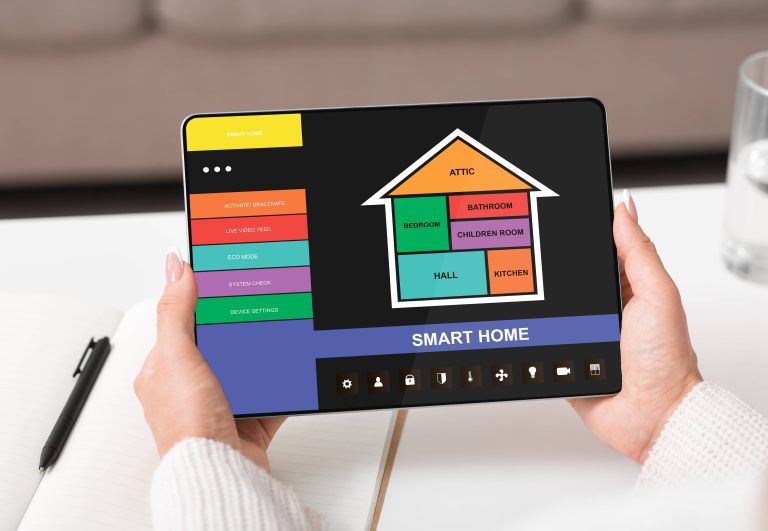
In the early days of home automation, the concept of a “smart home” was nothing more than a futuristic dream, depicted in science fiction movies and used as an enthralling selling point in tech expos. Fast forward to the present day, and advancements in technology have turned that dream into reality. What started with simple programmable thermostats and automated lighting systems has mushroomed into integrated ecosystems featuring a network of connected devices designed to make our lives more convenient, efficient, and enjoyable. Among the transformative technologies, robotics stands out as a game-changer, revolutionizing the landscape of smart homes like never before.
Robots are no longer confined to industrial applications and research labs. They’ve started infiltrating our homes, bringing with them unprecedented convenience, efficiency, and even companionship. In this article, we explore the multifaceted impact of robotics on smart homes, focusing on current innovations, future possibilities, and the broader implications for our daily lives.
1. Household Chores: From Tedious Tasks to Automated Ease
Daily chores are often mundane and time-consuming. Enter robotic vacuum cleaners, such as the Roomba and Roborock. These intelligent devices navigate our homes, sucking up dust and debris with minimal human intervention. Leveraging advanced sensors, machine learning algorithms, and sophisticated mapping technologies, these robots not only clean more efficiently than manual methods but also learn the layout of the home to optimize future cleaning routes.
Taking things a step further are robotic mops, window cleaners, and even lawnmowers. With models like the Braava jet mopping robot and Husqvarna’s Automower, indoor and outdoor cleaning has never been easier. These devices autonomously handle repetitive, dirty, or arduous tasks, freeing homeowners to engage in more meaningful and enjoyable activities.
2. Security: The Digital Sentry at Your Service
The realm of home security has also witnessed a significant upgrade thanks to robotics. Modern smart homes are equipped with advanced surveillance systems that incorporate robotic technology. Take for example the “BuddyGuard Flare,” a robotic security camera that employs facial recognition, motion detection, and machine learning to discern between normal household activity and potential threats.
Essentially, these robots act as vigilant sentries, continually monitoring their environment and alerting homeowners of unusual activity. Some even possess autonomous mobility, like the “Knightscope K5,” which patrols large properties or neighborhoods and contextualizes data in real-time, providing an extra layer of security that surpasses static camera systems.
3. Companionship and Accessibility: Robots as Caregivers
Robotics in smart homes can offer more than just convenience and security; they can also provide companionship and assistance to those in need. For elderly or disabled individuals, assistive robots like the “Paro therapeutic robot” or “ElliQ” become invaluable companions. These robots are designed not only to perform helpful tasks but also to offer emotional support and facilitate communication with family members or healthcare providers.
For example, ElliQ uses AI to engage in conversation, remind users to take medications, and even suggest activities to keep them mentally active. These features are pivotal in enhancing the quality of life for those who may otherwise face isolation or struggle with day-to-day activities.
4. Interactive Robotics: The New Dimension of Home Entertainment
Entertainment has also evolved with the advent of robotics. Interactive robots such as “Aibo” by Sony or “Vector” by Anki combine cutting-edge technology with engaging interfaces to offer unique interactive experiences. Equipped with sensors, AI-powered responses, and expressive behaviors, these robots can play games, perform tricks, and adapt to user preferences, turning everyday home entertainment into a cutting-edge, interactive venture.
Moreover, robotic toys and educational robots for children have found their way into countless smart homes, offering both learning and fun. Devices like “Lego Mindstorms” not only offer entertainment but also teach children about programming and robotics, making education a more dynamic and hands-on experience.
5. The Future: Beyond Automation to Autonomy
The future of robotics in smart homes hints at even more transformative changes. We are moving from mere automation to autonomy, where robots not only execute tasks but anticipate needs and make decisions. Imagine a future where your smart home’s robot chef, capable of whipping up meals from scratch, consults with your fridge and pantry to check for ingredients, makes a shopping list, and even orders groceries online. Companies like Moley Robotics are already working toward creating robotic kitchen systems that can prepare gourmet dishes with minimal human intervention.
In addition, we foresee a future where robots can seamlessly integrate with other smart home devices, operating under a unified framework. Collaborative robots (cobots) will likely become mainstream, working alongside humans to enhance productivity and offering customized experiences tailored to individual preferences.
Conclusion: The Symbiotic Relationship
The marriage of robotics and smart home technology is fostering an era of unparalleled convenience, safety, and enrichment. With robots taking on an ever-expanding array of household roles, the impact on our daily lives is profound. These intelligent machines not only handle tasks we either can’t or prefer not to do but also bring entertainment, companionship, and a new level of independence to various members of our households.
As innovation progresses and technology continues to evolve, the landscape of smart homes will become increasingly dominated by autonomous systems and robotics. The key takeaway is that far from being mere gadgets, robots are emerging as indispensable partners, cohabitating with us and enhancing various facets of our lives. The ongoing integration of robotics into smart homes promises a future where the line between human and machine collaboration becomes beautifully blurred, opening up a world of possibilities that were once deemed science fiction.
In the captivating journey toward ever-smarter homes, robotics stands at the forefront, ready to redefine what’s possible in making our living spaces not just smart, but truly intelligent.







